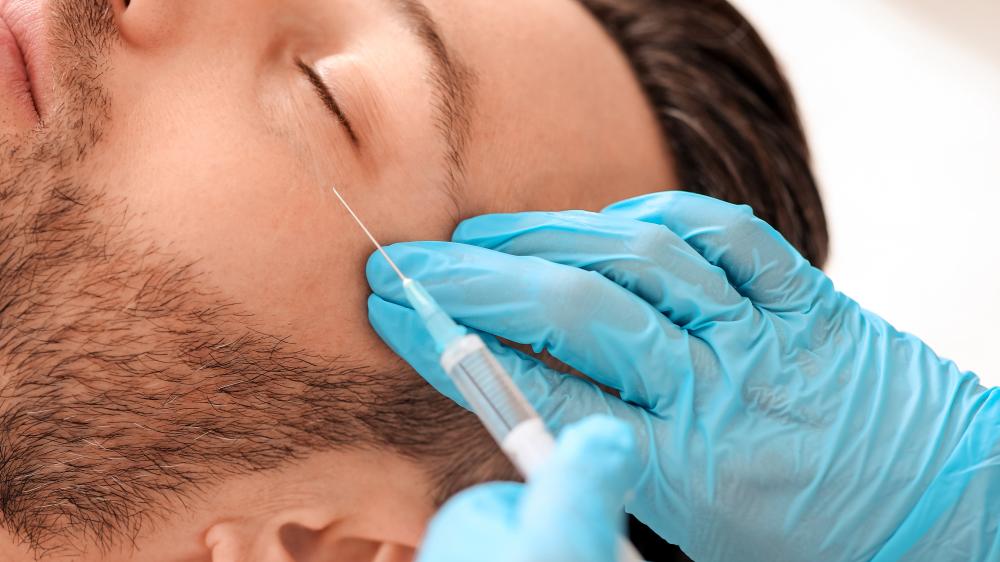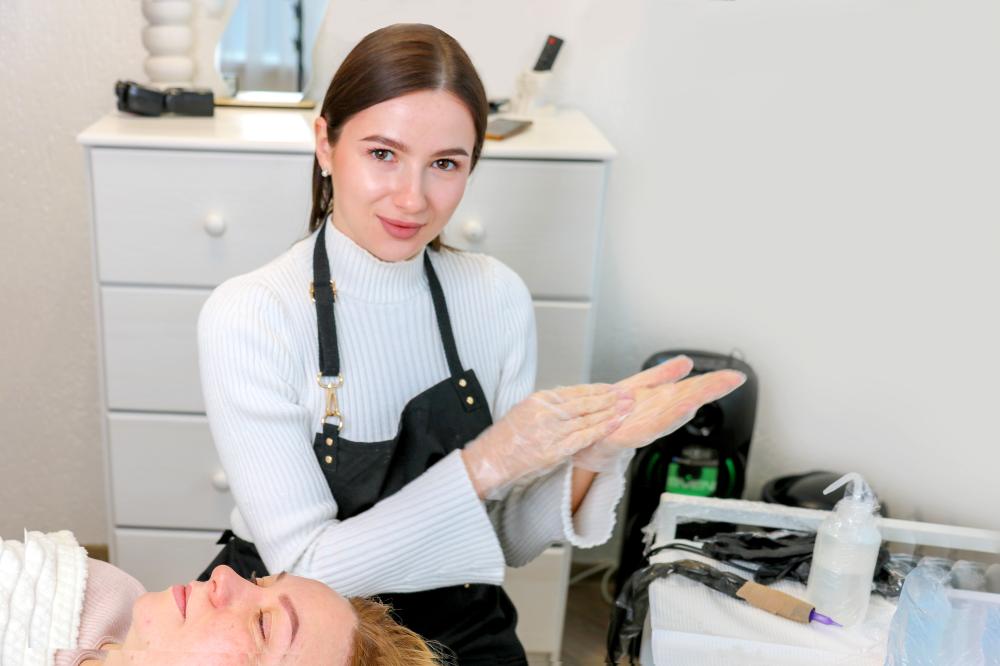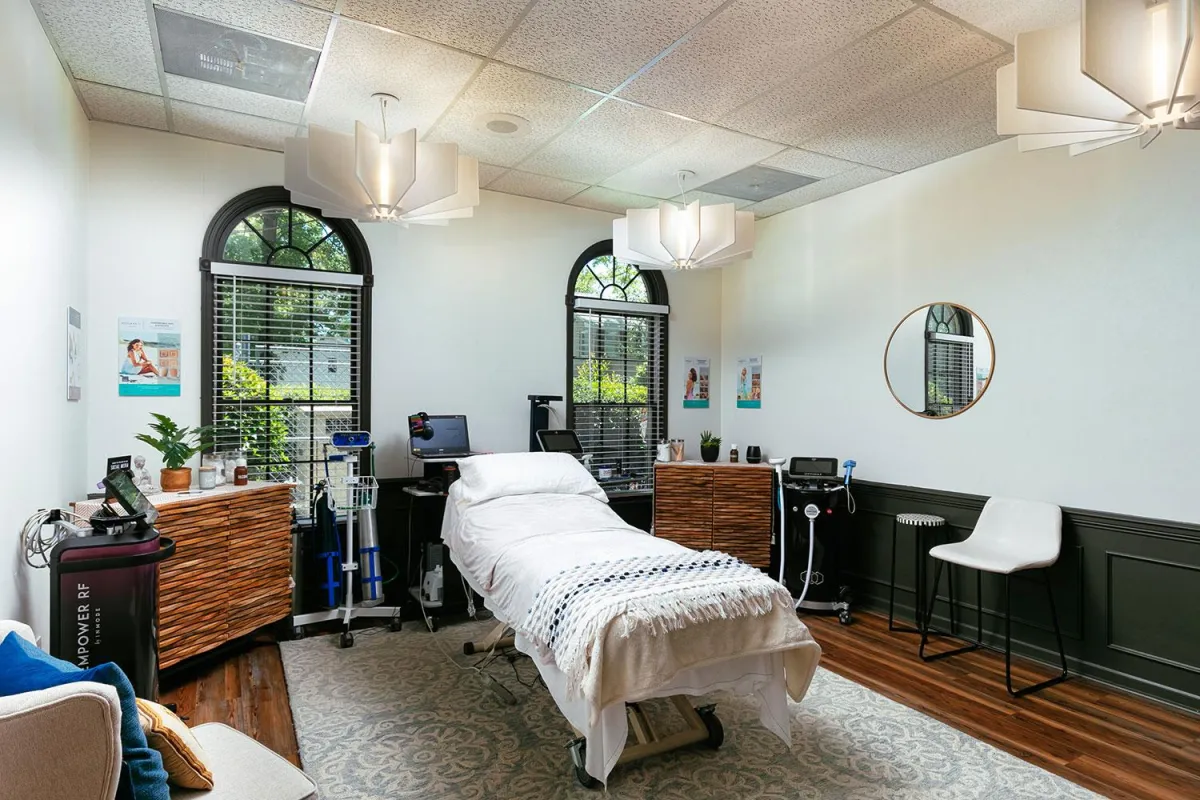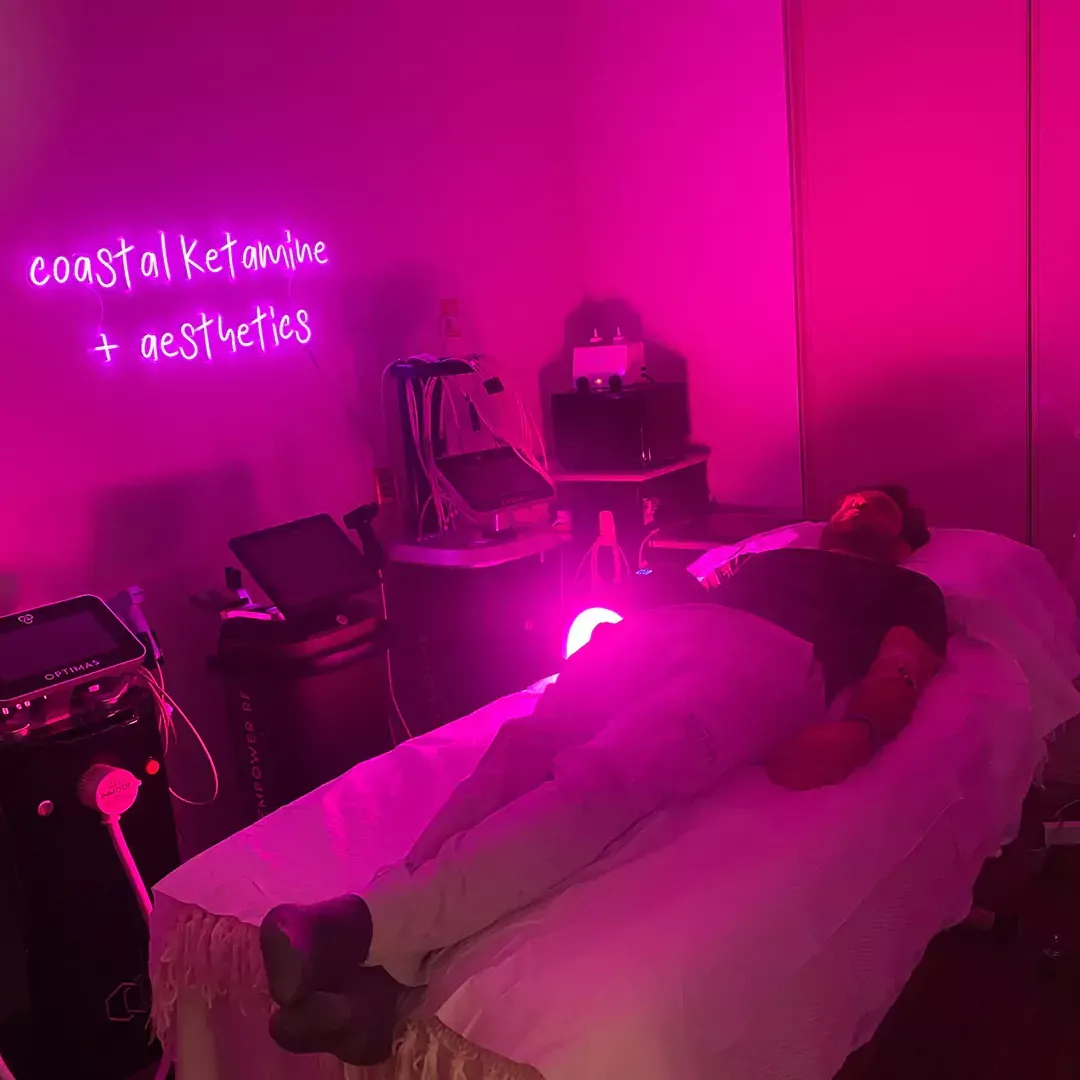Botox Injections For Migraines

How Do Botox Injections for Migraines Work?
Botox injections for migraines emerged as a groundbreaking treatment for individuals suffering from chronic migraines. The treatment involves injecting botulinum toxin A into specific areas of the head and neck. This neurotoxin helps block the release of chemicals involved in pain transmission, alleviating migraine symptoms. Patients often report a reduction in the frequency and intensity of their migraines, making everyday life more manageable.
Benefits Beyond Migraine Relief
While botox injections for migraines primarily aim to reduce headache frequency, the benefits can extend beyond pain relief. Many patients experience improvements in mental health, likely due to decreased migraine-related stress and anxiety. Our clients at Coastal Ketamine + Aesthetics often talk about feeling liberated from the unpredictability of migraine attacks, which in turn improves their overall quality of life.
Besides, these injections can lead to subtle cosmetic benefits because they target areas associated with tension headaches. As Botox relaxes the muscles, it can also smooth out wrinkles, offering a dual advantage of therapeutic and aesthetic results.
Who Should Consider Botox Injections for Migraines?
Botox injections for migraines are typically recommended for individuals who experience 15 or more headache days per month. If traditional migraine treatments have failed to provide relief, this method might be a suitable option. It's essential to consult with professionals who can assess whether this treatment aligns with your specific needs.
The procedure is not just for those with migraines; tension and cluster headache sufferers may also benefit, though clinical evidence varies. Therefore, a personalized consultation at centers like ours ensures that patients receive tailored advice on the available options for their unique situation.
Why Do Patients Choose Botox for Migraines?
The decision to opt for botox injections for migraines is often driven by the quest for a solution when other treatments fall short. The non-invasive nature of Botox attracts patients who dread the side effects of medication. Clients frequently discuss the convenience of a quick office visit, eliminating the need for complex medical regimens.
A recurring theme from anecdotal evidence at Coastal Ketamine + Aesthetics is the newfound freedom from relentless migraine cycles. Patients report enjoying activities they thought they'd lost to persistent headaches, such as attending social events without the fear of a debilitating episode. This shift in lifestyle is a powerful testament to Botox's potential impact.
Is Botox for Migraines Right for You?
Before deciding on botox injections for migraines, potential candidates should evaluate several factors. Here's a quick checklist to help you make an informed decision:
- Frequency of migraines: More than 15 headache days a month?
- Effectiveness of current treatments: Are other therapies working for you?
- Medical history: Do you have any conditions that might affect treatment?
- Commitment to follow-up: Are you ready for repeat treatments every 12 weeks?
Discussing these points with your healthcare provider can offer clarity. At Coastal Ketamine + Aesthetics, our team of experts is always ready to guide you through each step, ensuring you're fully informed before making any decisions.
How Is the Botox Injection Process Carried Out?
The process of administering botox injections for migraines is straightforward and minimally invasive. Here's what you can typically expect:
- The procedure starts with a consultation to confirm treatment suitability.
- During the session, Botox is injected into specific sites around the head and neck.
- The whole process lasts about 15 to 30 minutes, with immediate return to daily activities.
- Patients generally experience relief within a few weeks, with benefits lasting up to three months before requiring a follow-up session.
As someone with over two decades in the industry, I can attest that many of our patients at Coastal Ketamine + Aesthetics appreciate the seamless nature of this therapy. The immediate return to routine is a significant advantage, contributing to the treatment's growing popularity.

The Benefits of Botox for Migraines
Botox for migraines is not just a beauty treatment, but a potent tool for battling chronic migraine attacks. As someone who's been in the field for more than two decades, I've seen firsthand how Botox injections, when administered correctly, can significantly reduce the frequency of migraine days. At Coastal Ketamine + Aesthetics, we leverage cutting-edge techniques to ensure our clients experience these benefits firsthand. It's remarkable how this treatment, initially famous for its aesthetic uses, offers relief for so many suffering from debilitating headaches.
How Does Botox for Migraines Work?
Botox, or onabotulinumtoxinA, is injected into specific areas around the head and neck, effectively blocking the release of chemicals involved in the pain transmission pathways. This blockade prevents migraine symptoms from being triggered. Our team at Coastal Ketamine + Aesthetics adheres to strict protocols to maximize efficacy, tailoring each treatment plan to suit individual needs.
Typically, patients receive between 31 and 39 injections, targeting muscles across the forehead, neck, and shoulders. This targeted approach is designed to inhibit nerves that are hyperactive during migraine attacks.
What to Expect During Your Botox Appointment
Your journey with Botox for migraines begins with a thorough consultation. We prioritize listening to your concerns, understanding your migraine history, and assessing potential triggers. Our skilled practitioners ensure a comfortable experience, focusing on safety and results. You'll receive the injections in a relaxed setting, often taking just about 20 minutes. With our experience at Coastal Ketamine + Aesthetics, patients often report feeling minimal discomfort, akin to a quick pinch.
- Scheduling a consultation
- Personalized treatment plan
- Ongoing support and adjustments
What Qualifies as a Botox for Migraines Treatment?
Botox for migraines is suitable for adults experiencing 15 or more headache days a month, with each attack lasting four or more hours. This FDA-approved treatment must be administered by a qualified healthcare provider, like those at our Coastal Ketamine + Aesthetics, to ensure effectiveness and safety.
1. Consultation: Determine migraine history and potential suitability.
2. Treatment plan: Develop specific injection sites and schedule.
3. Follow-up: Monitor progress and adjust as needed for optimal results.
Common Questions About Botox for Migraines
Several questions arise when patients consider Botox for migraines. One frequent query is about the timeline for experiencing relief. Most individuals notice improvements after the second set of injections, which typically occurs 12 weeks after the first. However, full benefits are often realized by the third session. Another common concern is side effects; rest assured, these are generally mild and transient.
If you're contemplating this treatment, remember that our team at Coastal Ketamine + Aesthetics is here to guide you through every step. With a personalized touch, we ensure that your experience with Botox for migraines is as smooth and beneficial as possible.
How Botox Works for Migraines
Benefits and Potential Risks
- Reduced headache frequency
- Minimized migraine severity
- Improved overall quality of life
Is Botox the Right Solution for Your Migraines?
Common Questions About Botox for Migraines
Who is eligible for Botox treatment?
Individuals experiencing chronic migraines--defined as 15 or more headache days a month--are often suitable candidates for botox shots for migraines. By consulting specialists, such as those at Coastal Ketamine + Aesthetics, patients can determine eligibility and potential benefits.What is the procedure like?
The process is relatively straightforward and usually takes about 15 to 20 minutes. A series of small injections are administered across the forehead, temples, and neck. Most patients describe the sensation as a minor pinch.What to Expect After Treatment?
- Discuss expectations and goals with your provider.
- Monitor your response to the treatment.
- Schedule follow-up sessions as recommended.

What is the downside of Botox for migraines?
When considering Botox for migraines, it's important to be aware of some potential downsides. While many find relief, others might experience mild side effects such as neck pain, muscle weakness, or slight bruising at the injection sites. Rarely, more severe symptoms such as difficulty swallowing or breathing can occur, but these are exceptions rather than the rule. At Coastal Ketamine + Aesthetics, we emphasize patient safety and thorough consultations to minimize risks. It's crucial to weigh these aspects and discuss them with a healthcare provider to ensure you're making an informed decision.
Where do migraine Botox injections go?
Migraine Botox injections are strategically administered across several key areas of the head and neck. The typical protocol involves 31 to 39 injection sites, including the forehead, temples, back of the head, neck, and even the shoulders. This approach aims to target the muscles most involved in migraine activity. At our center, we tailor each session to your unique pattern of headache distribution to maximize effectiveness and comfort.
How long do Botox injections last for migraines?
Generally, the effects of Botox injections for migraines last about 10 to 12 weeks, which is why treatments are typically scheduled every three months. While some patients begin to notice a reduction in migraine frequency after the first session, more pronounced results often come after the second or third set of injections. This gradual improvement can make it a worthwhile investment for those grappling with chronic migraines. If you're considering ongoing treatment, it's a good idea to track your symptoms to gauge the therapy's effectiveness over time.
Will insurance pay for Botox for migraines?
Many insurance plans do cover Botox for chronic migraines, making it an accessible option for those who qualify. Typically, insurers require documentation of chronic migraine, defined as 15 or more headache days a month, and proof that other treatments have been ineffective. At Coastal Ketamine + Aesthetics, we can assist you with navigating the insurance process to determine your coverage details. A pre-authorization may be necessary, so it's helpful to be prepared with a history of previous treatments and your migraine pattern.
How effective is Botox in treating chronic migraines?
Botox has proven to be an effective solution for many individuals suffering from chronic migraines. Clinical studies have shown that patients often experience a significant reduction in both the frequency and severity of migraines. For some, this can mean gaining back days each month that were previously lost to debilitating headaches. At Coastal Ketamine + Aesthetics, we've seen firsthand how Botox can transform the daily lives of our clients, enabling them to participate more fully in work, family, and social activities. However, it's also essential to remember that results can vary, and ongoing treatment and consultation with a healthcare provider are critical in achieving the best outcomes.
Resources
- U.S. Food and Drug Administration (FDA) - The FDA is a government agency responsible for protecting public health by ensuring the safety, efficacy, and security of human and veterinary drugs, biological products, and medical devices.
- American Migraine Foundation - The American Migraine Foundation is a non-profit organization dedicated to the advancement of research and awareness surrounding migraines.
- American Headache Society - The American Headache Society is a professional society for healthcare providers dedicated to the study and treatment of headache and migraine disorders.
- Mayo Clinic - The Mayo Clinic is a non-profit medical practice and medical research group renowned for its healthcare services and contributions to medical education and research.
- Centers for Disease Control and Prevention (CDC) - The CDC is a national public health institute in the United States tasked with protecting public health and safety through the control and prevention of disease, injury, and disability.











